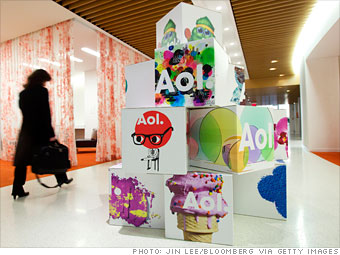
The Rise: Originally founded in 1983 as Control Video Corporation, the Web 1.0 company would eventually become the most popular online portal of its kind with more than 30 million subscribers in the 1990s. AOL also helped popularize email as a new media medium with the ubiquitous slogan, "You've got mail." Then in 2000, AOL bought Time Warner (FORTUNE's parent company) for $164 billion, bringing its total valuation to an all-time high of $240 billion.
The Fall: Like any failed relationship, the merger would end badly for both parties. Nine years later, AOL was spun off with a value of just $2.5 billion. Its subscriber base hasn't grown since 2002, and last year, the company reported $2.4 billion in revenues, a 25% drop, and a net loss of $782.5 million against net profit of $248 million. Meanwhile, its total share of online display advertising fell to 5.3% in 2010 from 6.8% in 2009. Current CEO Tim Armstrong recently cautioned that positive results won't come in until the second half of 2011 at earliest.
The Plan: Become a go-to news organization. To that end, Armstrong and crew have gone nuts with acquisitions. In June 2009, the company bought hyper local newspaper startup Patch; last September, it picked up the popular tech blog TechCrunch for roughly $40 million. And just last week, the company snapped up The Huffington Post for $315 million, the largest purchase yet during Armstrong's tenure.
The Challenge: While AOL's recent shopping spree should help beef up the company's presence moving forward, it remains to be seen whether all that traffic growth will outweigh the number of long-time subscribers signing off of the company's dying dial-up service in the long term and grow the company from its current market cap of $2.3 billion and 117 million unique visitors per month.
NEXT: Nokia
